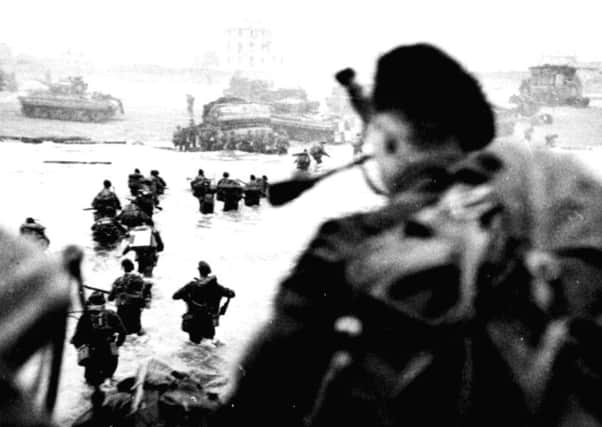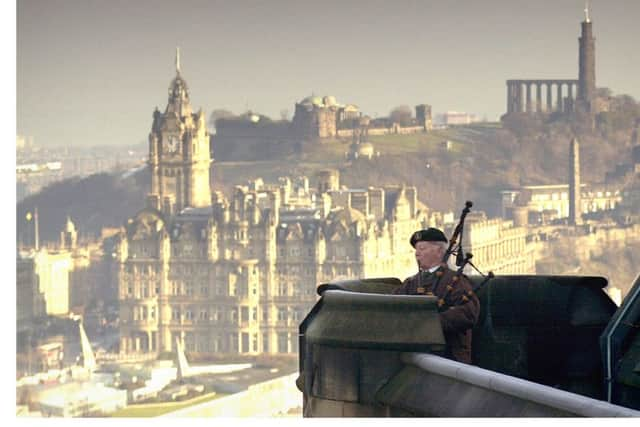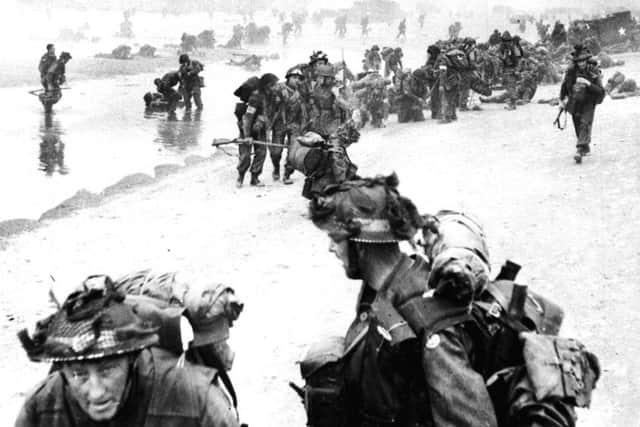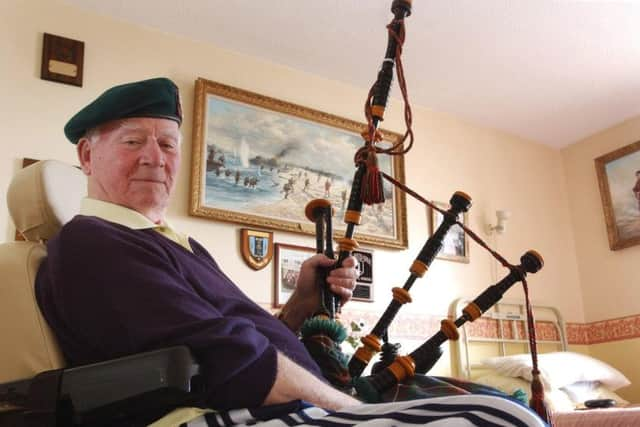The story of the 'mad' Highland piper of World War II


D-Day is known as one of the most violent bloody battles of WWII for the Allied side, on the Normandy beaches. Nearing the end of the war, the beaches were invaded by hundreds of thousands of young men, traipsing through the red stained sea, being picked off by the well prepared enemy side before they even reached the beach.
One of those young men was Private Bill Millin, who was serving under Brigadier Simon Fraser, 15th Lord Lovat, commander of 1 Special Service Brigade.
Advertisement
Hide AdAdvertisement
Hide AdPrivate Millin was part of the Highland Light Infantry, Queen’s Own Cameron Highlanders, No. 4 Commando, and on that day, personal piper to Lord Lovat.


Lovat, whose father had been President of the Piobaireachd Society during the 1920s, held to the tradition of having a piper at his side when going into battle.
Pipers had been banned from the front line after, during WWI, the enemy figured out how much of a moral boost it gave the men. Pipers were slaughtered in their droves, leading the war office to restrict their presence to camps well behind the front line.
On D-Day, Lord Lovat asked Private Millin to pipe the men ashore, as had been tradition. The Private declined, reminding his commanding officer of the policy.
Lord Lovat replied: “Ah, but that’s the English War Office. You and I are both Scottish, and that doesn’t apply.”


As they began their disembark, Private Millin began to play Highland Laddie, the only solider adorned in a kilt - the one has father had worn while fighting in WWI. Mere seconds after stepping into the water, the solider next to him was shot in the face and killed instantly.
The book, Voices from D-Day by Jonathan Bastable, quoted Private Millin saying: “We were the first out of our troop to reach the shore. The ramps on the boat went down and as we stepped off Lovat ordered me to play ‘Highland Laddie.’
Advertisement
Hide AdAdvertisement
Hide Ad“I started playing as soon as I touched the water. Whenever I hear that song I remember walking through the surf.
“Wounded men were shocked to see me. They had been expecting to see a doctor or some kind of medical help. Instead they saw me in my kilt and playing the bagpipes. It was horrifying, as I felt so helpless.


“There was a small entrance road leading off the beach and ten or twelve were lying wounded at its entrance. Some of them said: ‘Are the medics here, Jock?’ I told them not to worry; the doctors would be coming.
“I took shelter behind a low wall and watched as a flail tank made its way towards the road and the wounded men. I quickly got up and waved my hands frantically over my head, hoping to get the attention of the commander whose steel hat was just visible out of the top of the tank. He seemed not to notice and went straight ahead over the top of the wounded soldiers. It was very traumatic watching those men die.”
Tradition dictated that the piper was to march up and down the battlefield with his pipes, encouraging the soldiers on.
“There was no time to feel any real emotion. Normandy was a most upsetting campaign because there were so many casualties. It was a killing ground.”


Private Bill Millin was always amazed that he was never shot - not only did he walk up and down the beach of Normandy standing up, but the sound of the bagpipes could be heard over the noise of the gunfire.
Advertisement
Hide AdAdvertisement
Hide AdA captured German sniper later told the private that they did not shoot him because they thought he had gone mad and had taken pity on him, deciding to avoid hitting him.
On the 60th Anniversary of D-Day, Private Millin presented the set of pipes he had played on the beach to the Imperial War Museum at Edinburgh Castle, Scotland. However they are no longer on display. Sadly a discrepancy arose when the Pegasus Memorial Museum at Ranville, France claimed to have the pipes.
Private Millin explained that the pipes he presented to the Pegasus museum were a set of pipes that he played later on during the same campaign, saying: “The pipes I gave to the museum in Scotland are the D-Day pipes and the ones I gave to the museum in France are what I have called the Normandy pipes.”
In spite of Millin’s explanation, the curator of the Imperial War Museum decided that he could no longer use the pipes and the centrepiece of a Second World War exhibit. Millin took back his pipes but said he was not angry about what he called “a mix-up.”


The D-Day pipes are now displayed at Dawlish museum, Dawlish in Devon England. Bill Millin presented his pipes to Dawlish Museum along with his kilt, commando beret, and dirk. These items are still on display at the museum library with photographic archives and looped video telling of Millin’s exploits.
Bill Millin, who suffered a stroke in 2003, died in hospital in Torbay on August 17, 2010 aged 88.
